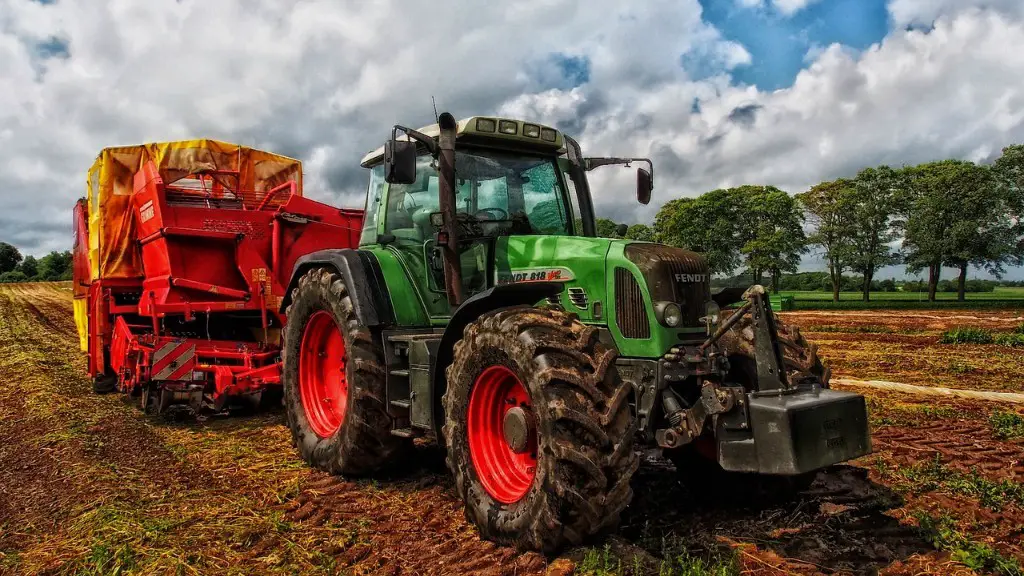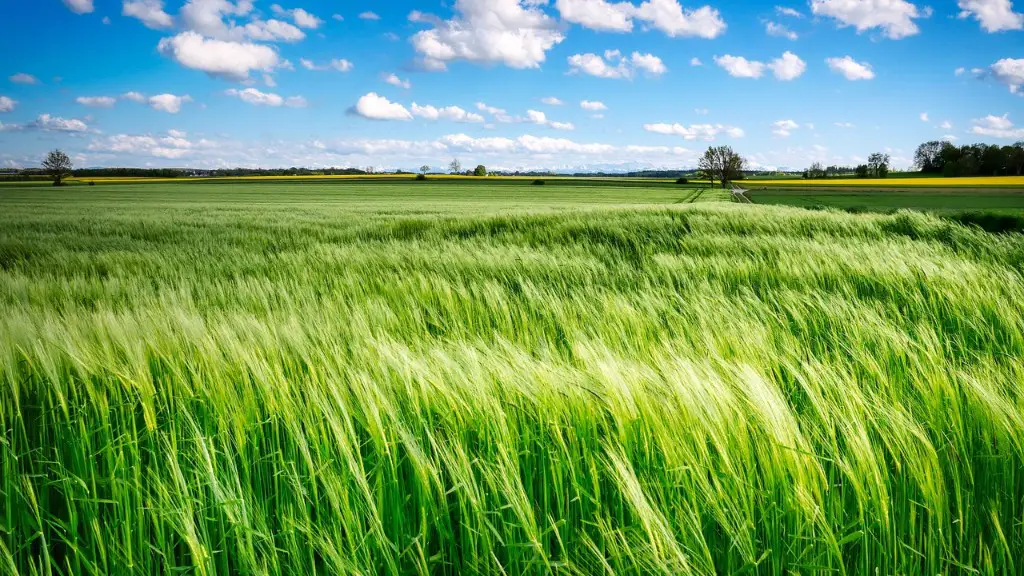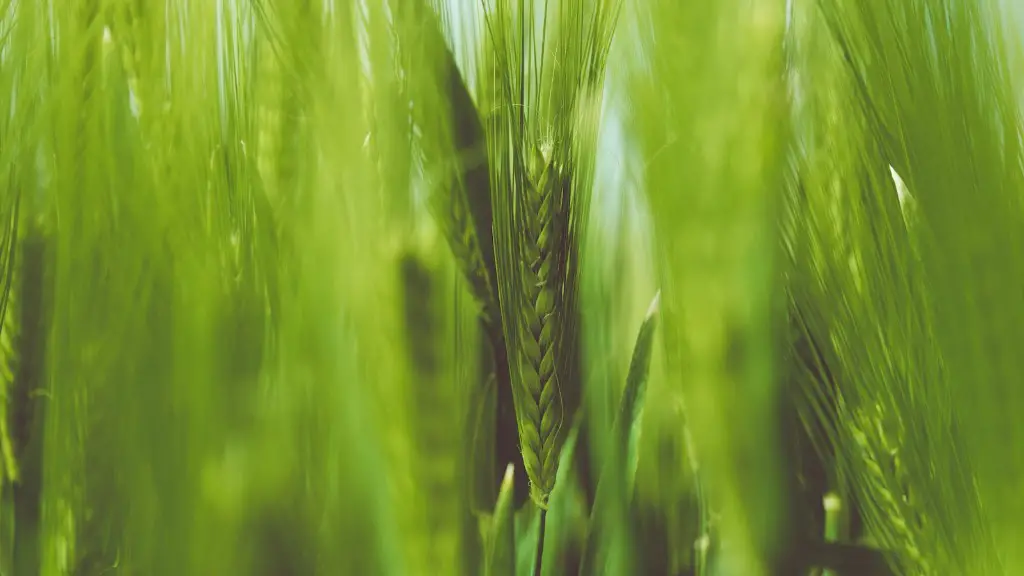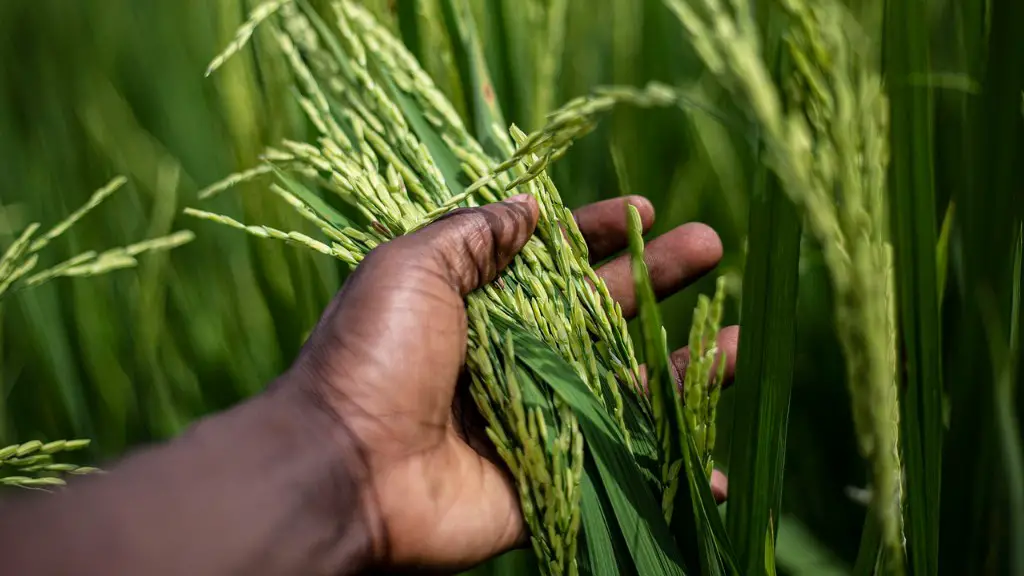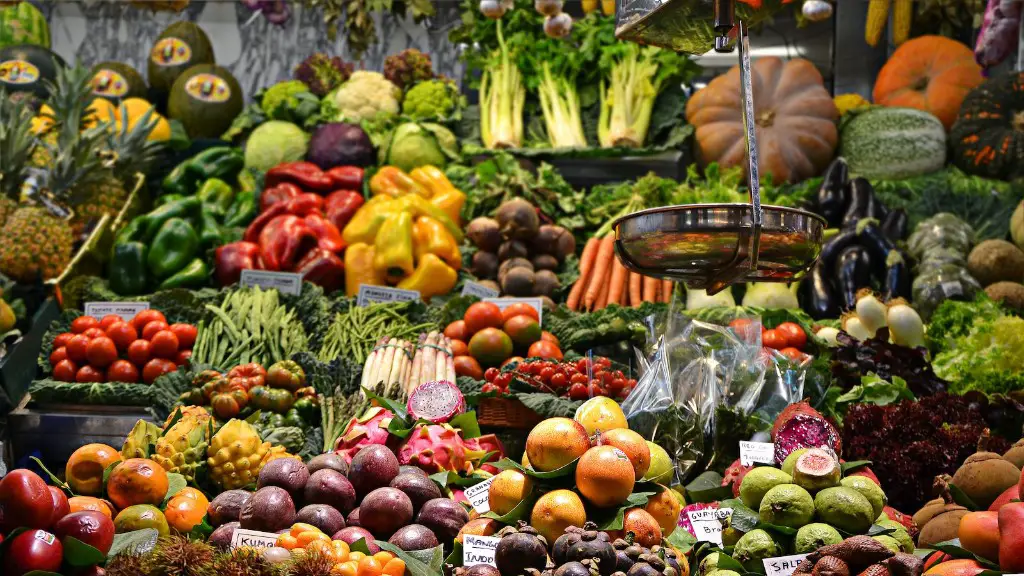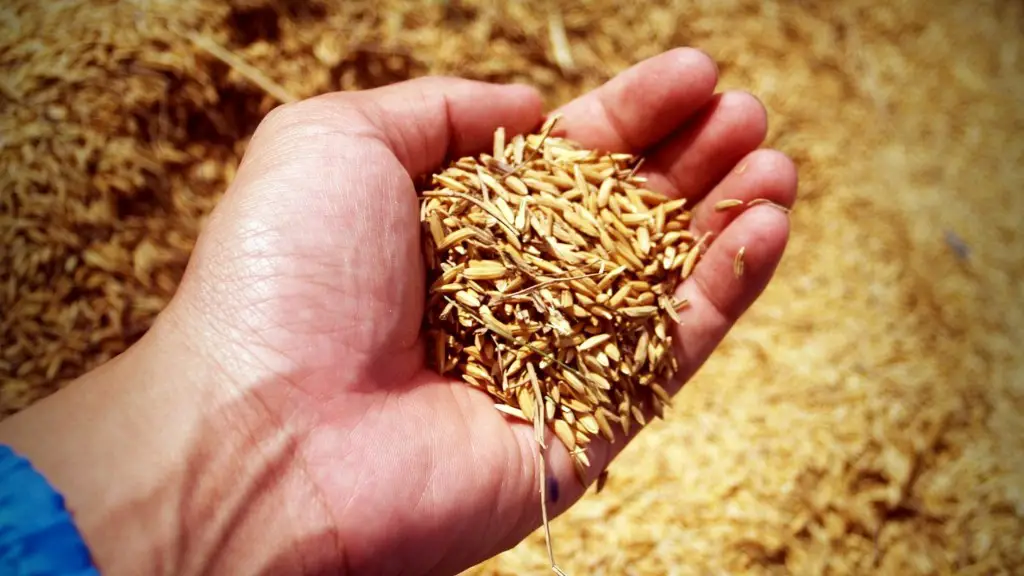Agriculture is an essential part of our daily lives. Regardless of the agricultural sector, technology has made many tasks easier and more efficient. Exploration and experimentation of the latest technological advancements are essential to the agricultural industry. From on-farm applications like precision farming to new interactive agricultural technologies, the latest technological advancements in this sector have been tremendous. From drones and artificial intelligence to data analysis and renewable energy sources, these technologies are changing the way farmers approach agricultural production.
In recent years, the Internet of Things (IoT) has become increasingly popular in the agricultural industry. IoT refers to a network of intelligent devices that use communication protocols to exchange data with each other and their environment. By using sensors and other tools, IoT can help farmers become more efficient in their production methods. IoT technology is also incredibly beneficial for crop management, as it can track moisture, temperature, and other factors to make accurate predictions for optimal planting and harvesting times.
In addition, the use of artificial intelligence (AI) is rapidly becoming increasingly popular in the agricultural sector. AI can make decisions and provide insights on crop quality, soil health, weather patterns, and other predictive aspects that could make a difference. With AI, farmers can also reduce labor costs and automate tedious tasks, such as the monitoring and maintenance of agricultural equipment. Moreover, AI can help with the management of crop insurance claims and the identification of pests and illnesses in plants.
Precision agriculture is another area that has seen a sharp increase in technological advancements. This technology uses various precision tools and sensors to improve yield, reduce environmental impacts, and reduce labor costs. Through the use of GPS, satellite imagery, and other technology, precision agriculture can provide more accurate assessments of soil health, irrigation systems, and nutrient applications. The use of this technology allows for a more targeted approach, allowing farmers to make informed decisions on the best methods for their crops and the most efficient use of their resources.
The rapid advancement of technology has also led to the development of innovative renewable energy sources for agricultural applications. Solar power is becoming increasingly popular, as it is cost-effective, sustainable, and incredibly efficient. Wind turbines, biofuels, geothermal, and hydropower can also be used to power various agricultural operations. These renewable energy sources are a great way to reduce energy costs and be more sustainable with agricultural processes.
Overall, there has been a large amount of development in the field of agriculture and agricultural technology. From the use of IoT and AI to precision agriculture and renewable energy sources, the latest technological advancements have allowed for many advances in the agricultural sector. By using these technologies, farmers are able to reduce costs, increase efficiency, and improve sustainability.
Drone Technology
Drones, or Unmanned Aerial Systems (UAS), are playing a major role in the advancement of agricultural technology. They can be used to monitor crop health, moisture levels, and soil erosion. Drones allow for quicker application processes, and surveys can be conducted in less than half the time it would take to do an in-person inspection. In addition, they can be used to target specific crops or weed infestations and can easily cover long distances. The use of drones has allowed for more accurate assessments and more granular data, which is essential for efficient agricultural management.
UAS are also incredibly beneficial for the management of livestock. Through the use of drones, herders can monitor the health of their animals and feed rations, as well as detect predators and lost animals. Drones can also be used to detect waterholes, watering points, and hazardous areas, making it easier to herd large groups of animals. Additionally, drones can be used to count animals quickly, which is important for collecting accurate herds data.
Another major benefit of UAS is their ability to collaborate with other forms of technology. For example, UAS can be used in conjunction with remote sensing products, such as images taken by satellites. This allows for more accurate data collection and analysis, as satellite images and drones offer complementary data sets. Moreover, UAS can be integrated with AI technology to provide real-time insights and increase efficiency in various agricultural processes.
Overall, drones have become an essential part of the agricultural industry due to their ability to provide accurate data, improve efficiency, and reduce labor costs. With their ability to collaborate with other forms of technology and provide detailed data in a cost-effective manner, UAS is sure to continue to play an important role in the advancement of agricultural technology.
Data Analysis and Smart Farming
Data analysis is becoming increasingly important in the agricultural industry. Through the use of various analytics tools, farmers can make more accurate predictions, optimize their processes, and reduce their environmental footprints. By collecting data from various sources, such as crop sensors, satellite imagery, and manual observations, farmers can gain a more detailed picture of what is happening on their fields. This data can then be used to make more informed decisions about planting, fertilization, irrigation, pest control, and other aspects of agricultural production.
With the advances in data analysis, smart farming has become increasingly popular in recent years. Smart farming is a form of precision agriculture that uses in-depth data to make decisions and inform strategies. Through the use of various sensors and technology, this system can help farmers become more efficient, reduce costs, and increase their yields. Additionally, smart farming can help reduce the environmental impacts of agricultural production by monitoring various aspects, such as water usage, energy consumption, and pesticide applications.
Furthermore, smart farming also allows for more profitable operations. With the use of data-driven decisions, farmers can make more informed decisions about the best types of crops for their specific environment and the most efficient production methods for their land. This can help maximize profits by ensuring the most efficient use of resources, reducing wastage, and limiting the use of chemical fertilizers and pesticides.
Big data is also becoming increasingly important in the agricultural industry. Through the use of big data and cloud computing, farmers are able to gather, analyze, and store large amounts of data, allowing for greater insights into their operations. Big data allows for more detailed analysis and deeper insights, which can be used to optimize various aspects of agricultural production and make more informed decisions.
Overall, data analysis and smart farming are becoming integral parts of the agricultural industry. Through the use of various analytics tools and technologies, farmers are able to access more detailed data, make better predictions, and gain a competitive edge in the industry. By making smarter decisions based on data-driven insights, farmers can reduce their costs, increase their yield, and make more eco-friendly decisions.
Robotics and Automation
Robotics and automation are increasingly being used in the agricultural sector to automate tedious, labor-intensive tasks. This technology can be used to speed up the planting and harvesting processes, as well as the maintenance of agricultural equipment. Automated machinery can also be used to collect, analyze, and store data, allowing for more accurate predictions and better decision-making. Automation can also reduce the need for manual labor, freeing up farmers to focus on more important tasks, such as planning and marketing.
Robots are also being used to reduce the burden on farmers. For example, robots can be used to take soil samples, survey fields, and track animal movement. Autonomous vehicles are being used as a safer alternative to using human labor. Additionally, robots can be used to automate tedious tasks such as weeding and fertilizing, which can save a significant amount of time, labor, and money.
Furthermore, robotics and automation technology can be used to develop more efficient and sustainable agricultural production methods. By using automated machinery, farmers are able to use fewer resources and reduce their environmental impact, which is essential for sustainable agricultural practices. Automation can also help improve food quality, as robots can be programmed to follow specific protocols and ensure a consistent production process.
Overall, robotics and automation are quickly becoming an essential part of the agricultural industry. By automating tedious tasks and improving efficiency, this technology can help farmers save time, labor, and money. Additionally, robotics and automation can help farmers reduce their environmental impact, improve food quality, and ensure consistent production processes.
Smart Irrigation
Smart irrigation is rapidly becoming an essential part of agricultural technology. Smart irrigation systems use automated sensors and controllers to monitor soil moisture levels and determine when and how much water is needed. By doing this, farmers can reduce water usage, optimize their irrigation processes, and reduce their environmental footprints. Additionally, this technology can also be used to detect leaks, monitor water tables, and identify clogged irrigation systems, making it easier to manage irrigation systems.
Smart irrigation systems can also be used in conjunction with other technologies to help reduce labor costs and increase productivity. For example, these systems can be integrated with AI and Big Data technologies to provide automated insight into crop health and irrigation patterns. This data can then be used to determine optimal irrigation times, help manage water supplies, and improve crop yields.
Furthermore, smart irrigation systems are also beneficial for reducing water waste. These systems use precision to determine when and how much water is needed, which can help reduce over-watering and resulting soil erosion. Additionally, these systems can detect water runoff and reduce evaporation, allowing for more efficient water usage and a decreased environmental impact.
Overall, smart irrigation systems have become increasingly popular in the agricultural sector. With their ability to reduce water usage, optimize irrigation processes, and provide detailed data, these systems are essential for modern farming. By using this technology, farmers are able to become more efficient, reduce labor costs, and decrease their environmental impact.
Plant Genetics and Disease Management
The advancement of technology has also allowed for major advancements in the field of plant genetics. By using various technologies, such as genomic sequencing, gene editing, and data analysis, farmers can create new varieties of plants that are resistant to pests and diseases. This technology can also be used to create plants that are more resilient to changing climate conditions and other environmental factors.
Moreover, this technology can also be used to create plants with higher yields and nutritional values. Through the use of gene editing, plants can be modified to produce more food and remain disease-resistant even during harsh environmental conditions. In addition, gene editing can also be used to improve the taste, texture, and shelf-life of various fruits and vegetables.
In addition, technology is also being used to more effectively manage and treat plant diseases. By using advanced tools and technologies, such as data analysis, AI, and remote sensing, farmers are able to detect pests and diseases in their crops more quickly and accurately. This technology can be used to monitor crop growth, detect macroscopic signs of diseases, and analyze soil health. By doing this, farmers can quickly and efficiently treat issues before they become too serious.
Overall, technology advancements are making major impacts in the field of agriculture. By using technology to create new, disease-resistant varieties of plants, reduce labor costs, and improve disease management, farmers are able to increase their yields, reduce their environmental footprints, and become more efficient in their production methods. Technology continues to play an essential role in all aspects of the agricultural industry, and its impact will only continue to grow.
